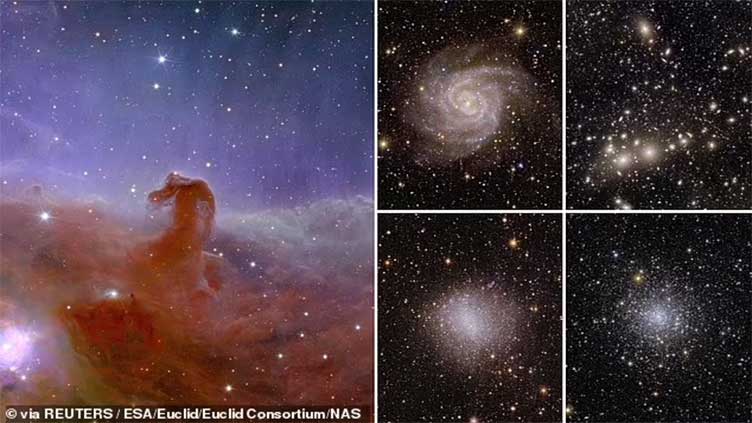First-ever full-colour images of cosmos released

WeirdNews
First five images from Euclid probe include spiral galaxy and 'horsehead' nebula
(Web Desk) - The UK-backed space telescope blasted off from Florida in July to study cosmos.
Stunning new photos from the European Space Agency's (ESA's) Euclid probe show the cosmos in 'mesmerizing' detail.
The UK-backed spacecraft, which blasted off from Florida in July, has returned its first five images from its vantage point about one million miles from Earth.
Among them is a shot of 1,000 galaxies in the Perseus Cluster 250 million light years away, as well as a view of the Horsehead Nebula in the Orion constellation.
There's also a stunning spiral galaxy, an 'irregular dwarf galaxy' and a globular cluster – a dense ball of about 400,000 ancient stars.
The first five images released today are the first step in Euclid's six-year mission to create the most extensive 3D map of the universe yet.
ESA said no other telescope has been able to create such razor-sharp astronomical images across such a large patch of the sky.
Since being launched by a SpaceX rocket back in July, Euclid is stationed at L2, the 'second Lagrange point' of space – a position in space between Earth and the sun where objects sent there tend to stay put.
L2 is located 930,000 miles (1.5 million km) directly 'behind' the Earth as viewed from the sun – nearly four times further away from the Earth than the moon ever reaches.
Professor Carol Mundell, ESA's director of science, said: 'What we see are exquisite images over vast areas of the sky taken actually very quickly to great depths.'
The first image shows 1,000 galaxies belonging to the Perseus Cluster, a cluster of galaxies in the constellation named after the Greek mythological hero.
These 1,000 galaxies are the brightest ones in the shot, but there's also more than 100,000 additional galaxies further away in the background that look dimmer.
Perseus is one of the most massive structures known in the universe, measuring some 11 million light-years across, containing thousands of galaxies immersed in a vast cloud of hot gas.
It is located 240 million light-years away from Earth, which is relatively close in astronomical terms.


